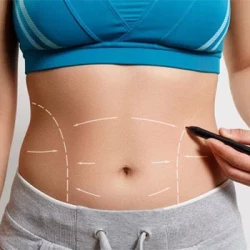How to Minimize Tummy Tuck Scars?
- ByMedical Content Team
- Medically Reviewed byDr. Sabine Kulhanek
Fact checked
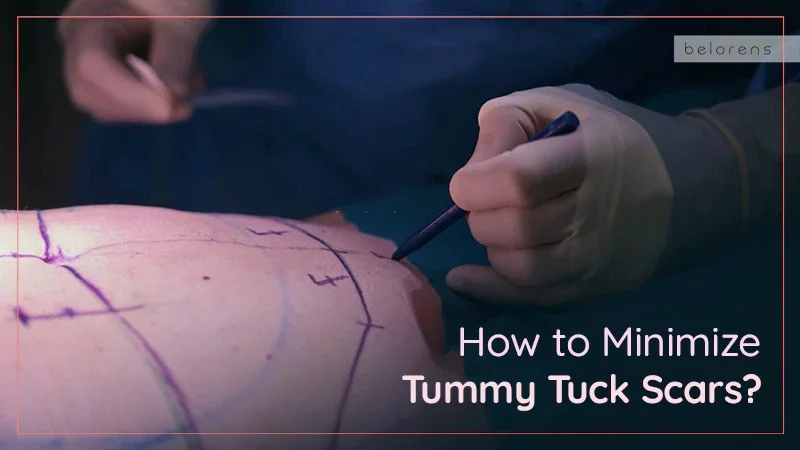
"Every scar tells a story," so they say - a story of resilience, of change, of journeys taken. But as you embark on your own transformative journey with a tummy tuck, also known as abdominoplasty, you might wish the tale were told a little more subtly. After all, this is a story of self-love and a fresh start, not a volume you want to broadcast in bold print across your body.
Imagine this: You've just been through a successful tummy tuck surgery, a decision made with courage and self-care in mind. The procedure is over, and you're eager to embrace the new, confident you. However, the thought of potential scars left on your skin might cast a shadow over your newly found joy.
In this blog post, we'll walk through the winding path of post-tummy tuck healing. We'll explore the world of scar reduction, offering tips and advice to ensure your body's story is written in fine print. Because while every scar does indeed tell a story, you hold the pen. So grab your metaphorical quill, and let's rewrite your body's narrative, minimizing the footnotes of scarring after a tummy tuck.
Understanding Different Types of Tummy Tuck Scars
Abdominoplasty procedures can result in various types of scars, depending on the specific technique used and individual factors. Let's take a look at the different types of tummy tuck scars you may encounter:
Traditional or Full Abdominoplasty Scar
This is the most common type of scar resulting from a traditional abdominoplasty procedure. It extends horizontally across the lower abdomen, typically spanning from hip to hip, just above the pubic area. The length and shape of this scar may vary based on factors such as incision placement and surgical technique.
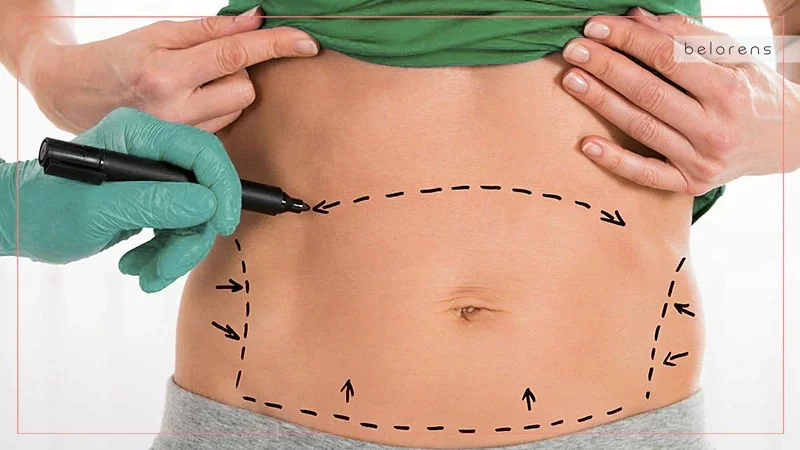
In addition to the linear scar, there will usually be a circular scar around the belly button, which results from the incision made by the surgeon to detach it from the surrounding skin and tissue for proper repositioning of the naval to achieve a natural-looking result.
Mini or Partial Abdominoplasty Scar
For individuals who require less extensive correction, a mini abdominoplasty may be performed. The resulting scar is shorter than a traditional abdominoplasty scar and is usually located below the bikini line.
Extended or Circumferential Abdominoplasty Scar
In cases where excess skin needs to be addressed not only in the abdominal region but also around the sides and back, an extended or circumferential abdominoplasty may be performed.
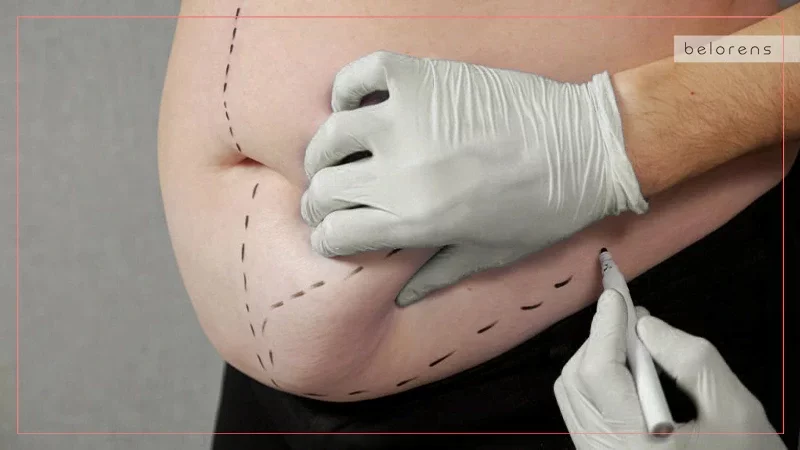
This results in a longer scar that spans beyond just hip-to-hip, encircling part of the waistline.
Fleur-de-Lis or Vertical Abdominoplasty Scar
When there is significant vertical laxity in addition to horizontal excess skin, a fleur-de-lis (French for "flower lily") abdominoplasty may be recommended by your surgeon.
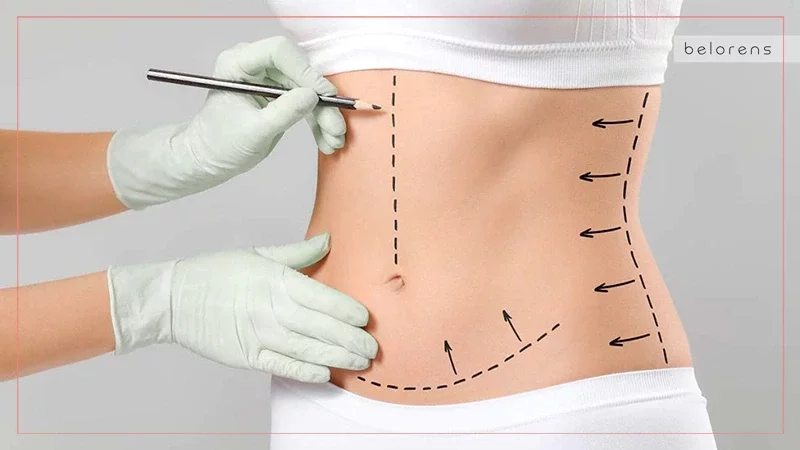
This technique involves an additional vertical incision along with a horizontal one, creating an anchor-shaped scar.
Revisional Scars
Occasionally, revisional surgeries are required due to unforeseen complications or desired improvements following initial tummy tuck procedures. These secondary surgeries could result in new scars near existing ones as they aim to refine previous outcomes.
How to Make Abdominoplasty Scars Less Visible?
It's important to note that every individual's scarring can vary based on factors such as skin type, genetics, and the body's natural healing process. Additionally, skilled surgeons employ techniques to ensure scars are placed discreetly within natural body creases or areas typically covered by clothing.
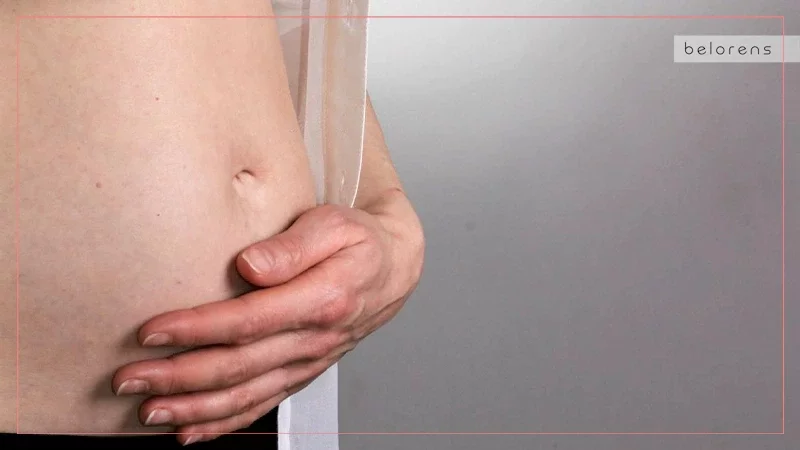
While tummy tuck scars may initially appear prominent or noticeable after surgery, they tend to fade and improve significantly over time with proper care and scar management techniques. However, there are certain things you can do to ensure proper healing of the incisions and make the scars left on your body as unnoticeable as possible.
What You Should Do Before Surgery
Before undergoing abdominoplasty, there are several steps you can take to enhance the healing process and reduce scarring. By following these guidelines, you can optimize your chances of achieving smoother and less noticeable scars post-surgery. Here's what you need to do:
1-Consultation with Your Surgeon: Schedule a thorough consultation with your surgeon well in advance of the procedure. This will allow both of you to discuss your goals, expectations, and any concerns regarding scarring.
2-Maintain a Healthy Lifestyle: Prioritize overall health in the weeks leading up to the surgery by adopting a balanced diet rich in nutrients and staying hydrated. Incorporate regular exercise into your routine to improve blood circulation and promote optimal healing.
3-Avoid Smoking: If you smoke, it is crucial to quit at least six weeks before surgery (and continue abstaining during recovery). Smoking impairs blood flow and hinders the body's ability to heal efficiently.
4-Stay Hydrated: Proper hydration is essential for healthy skin regeneration and scar formation. Aim for at least 8-10 glasses of water per day leading up to the surgery.

5-Follow Medication Instructions: Inform your surgeon about all medications or supplements you currently take or plan on taking before the procedure so they can advise accordingly.
6-Prepare Your Skin: Keep your abdominal area clean by gently washing it daily with mild soap or cleanser recommended by your surgeon.
7-Manage Stress Levels: High stress levels can negatively impact wound healing processes after surgery; practice stress management techniques such as meditation or deep breathing exercises to promote a calm and relaxed state of mind.
8-Discontinue Certain Medications: Some medications like aspirin or nonsteroidal anti-inflammatory drugs (NSAIDs) may increase bleeding risks during surgery; therefore, consult with your surgeon about temporarily discontinuing them prior to the procedure.
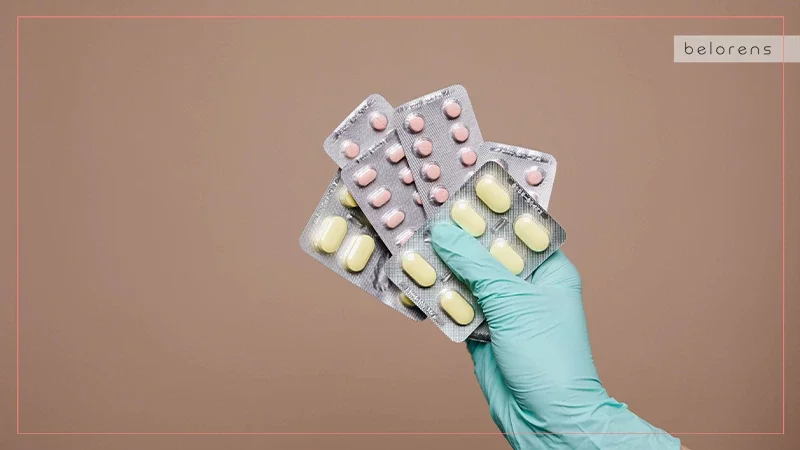
9-Vitamin Supplementation: Discuss with your surgeon the potential benefits of vitamin supplementation, particularly vitamins A and C, which play crucial roles in collagen production and wound healing.
10-Follow Pre-Surgery Instructions: Your surgeon will provide you with specific pre-surgery instructions tailored to your individual needs; it is essential to take note of these guidelines and adhere to them strictly for optimal results.
What You Should Do During Recovery Period
As you embark on the recovery phase, there are several steps you can take to minimize scarring and promote optimal healing. Here are essential guidelines to follow during this crucial period:
1-Follow Post-Surgery Instructions: Your surgeon will provide detailed post-operative instructions specific to your case. It is vital to adhere strictly to these guidelines, including wound care, medication schedules, and activity restrictions.
2-Keep Incision Sites Clean: Gently clean the incision sites as directed by your surgeon using mild soap and water or an antiseptic solution. Pat them dry with a clean towel afterward.
3-Protect Incisions from Sun Exposure: Shield your incisions from direct sunlight for at least six months following surgery as UV rays can cause hyperpigmentation and make scars more visible.
4-Avoid Irritating Clothing: Opt for loose-fitting clothing made of soft fabrics that won't rub against or irritate the incision areas during the healing process.
5-Maintain a Healthy Diet: A balanced diet rich in nutrients such as protein, vitamins (particularly vitamin C), minerals, and antioxidants aids in tissue repair and collagen formation—essential elements for minimizing scar appearance.
6-Stay Hydrated: Drinking ample water helps keep skin hydrated and promotes overall healing processes within the body.
7-Sunscreen Application: Protecting your healing scars from sun exposure is crucial in minimizing their visibility. Apply a broad-spectrum sunscreen with an SPF of 30 or higher to the scarred area whenever you go outside, even if it's cloudy. Make sure to reapply every two hours or as directed by the sunscreen label.
8-Vitamin E: Some individuals find that applying vitamin E oil or creams directly on their healing scars may help reduce redness and promote skin healing. However, it's important to note that there is limited scientific evidence supporting its effectiveness for scar reduction. Before using vitamin E products, consult your surgeon or dermatologist for personalized advice as they can evaluate your specific case and provide appropriate recommendations.
9-Quit Smoking Completely: If you haven't already quit smoking before surgery, it is critical never to smoke during recovery as nicotine impairs blood circulation necessary for proper wound healing.
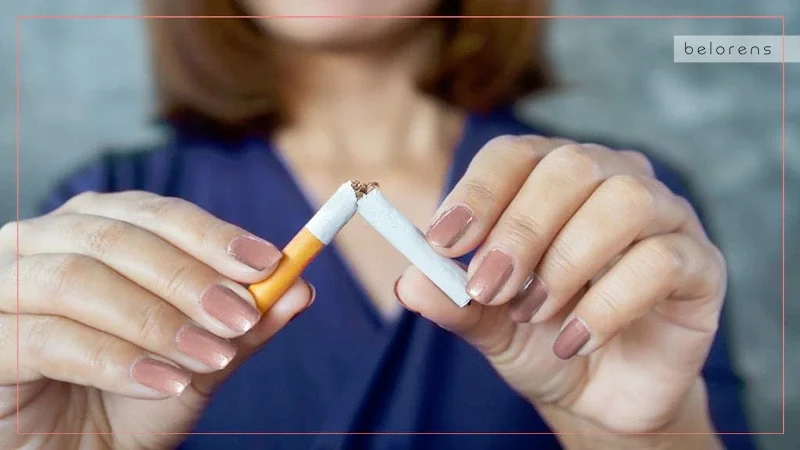
10-Manage Scar Tension: Follow any specific instructions provided by your surgeon regarding wearing compression garments or applying silicone gel sheets over healed incisions to help manage scar tension effectively.
11-Avoid Strenuous Activities: Engaging in strenuous exercises or activities that put strain on your abdominal area should be avoided during the initial weeks of recovery. Consult your surgeon for guidance on when it is safe to resume physical activities gradually.
12-Attend Follow-Up Appointments: Regularly attend all follow-up appointments with your surgeon, allowing them to monitor your healing progress and address any concerns promptly.
Remember that scars take time to fade and mature fully, often up to a year or more. Be patient throughout the recovery process and communicate openly with your surgeon about any worries you may have. By diligently following these guidelines, you are taking proactive steps towards minimizing scarring after abdominoplasty and achieving the best possible outcome for your tummy tuck journey.
Scar Revision Techniques for Minimizing Abdominoplasty Scars
If you're looking to further reduce the appearance of scars left after your abdominoplasty procedure, scar revision techniques can be considered. Here are some options commonly used by plastic surgeons:
1-Surgical Scar Revision: In cases where the tummy tuck scar is wide or raised, surgical scar revision may be recommended. This procedure involves removing the old scar and creating a new incision that follows more favorable lines or falls within natural skin creases. The goal is to create a thinner, less noticeable scar.
2-Laser Therapy: Laser treatments such as fractional laser resurfacing can help improve the texture and coloration of scars. This non-invasive technique uses focused light energy to stimulate collagen production and promote healthier-looking skin.
3-Dermabrasion: Dermabrasion involves gently sanding down the surface layers of the skin using specialized equipment, effectively reducing the appearance of scars by leveling them with surrounding healthy tissue.
4-Chemical Peels: Chemical peels involve applying a chemical solution to remove damaged outer layers of skin, revealing fresh, regenerated skin underneath and improving overall skin texture and tone.
5-Microneedling: Microneedling utilizes tiny needles to create controlled micro-injuries in the scar tissue, stimulating collagen production and promoting smoother-looking skin over time.
6-Corticosteroid Injections: For hypertrophic or keloid scars (raised or thickened), corticosteroid injections may be administered directly into the affected area to flatten and soften these types of scars.
7-Silicone Sheets or Gel: Continuing to use silicone sheets or gel post-recovery can aid in minimizing scarring even further during this stage.
It's essential to consult with an experienced plastic surgeon who specializes in scar revision procedures for personalized advice tailored specifically to your needs based on factors such as scar characteristics, skin type, and overall health. They will be able to recommend the most suitable techniques to help you achieve your desired results.
Keep in mind that scar revision procedures may have specific risks and recovery periods associated with them. Discuss all available options thoroughly with your surgeon before making any decisions regarding further scar reduction efforts after full recovery from abdominoplasty.
Also Read: Tummy Tuck vs. Liposuction
Takeaway
When considering a tummy tuck procedure, it's crucial to acknowledge that it will result in a permanent scar. It's important to reflect on your motivations for undergoing the procedure and weigh them against the potential drawbacks of scarring. If the desired outcomes outweigh the disadvantages, then it is likely worth pursuing.
To minimize scarring, there are steps you can take both before and after surgery. By facilitating a healthy healing process, you can reduce the appearance of scars. Being proactive in promoting optimal healing through pre-surgery preparations and post-operative care can help ensure minimal scarring.
Remember, while scarring is an inherent part of a tummy tuck, taking precautionary measures can contribute to achieving more favorable results
